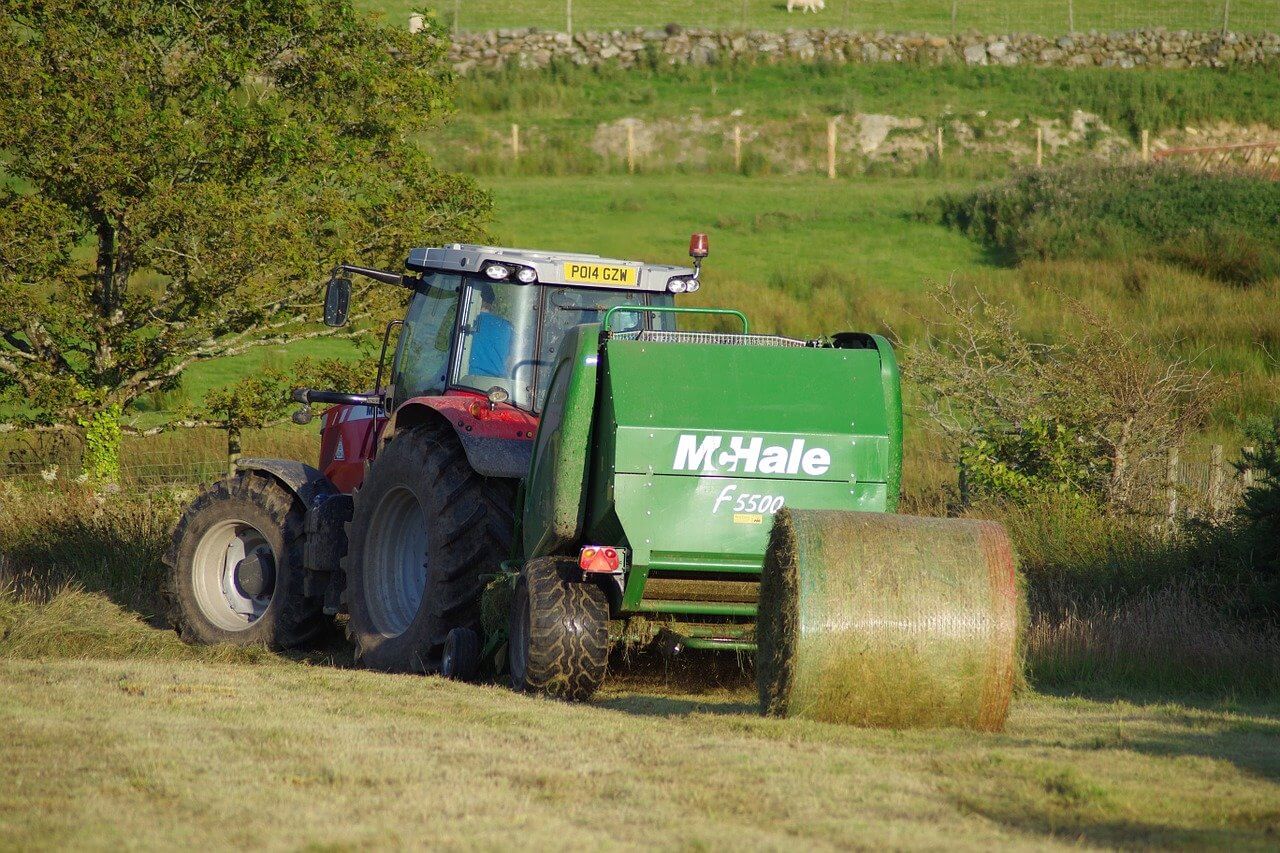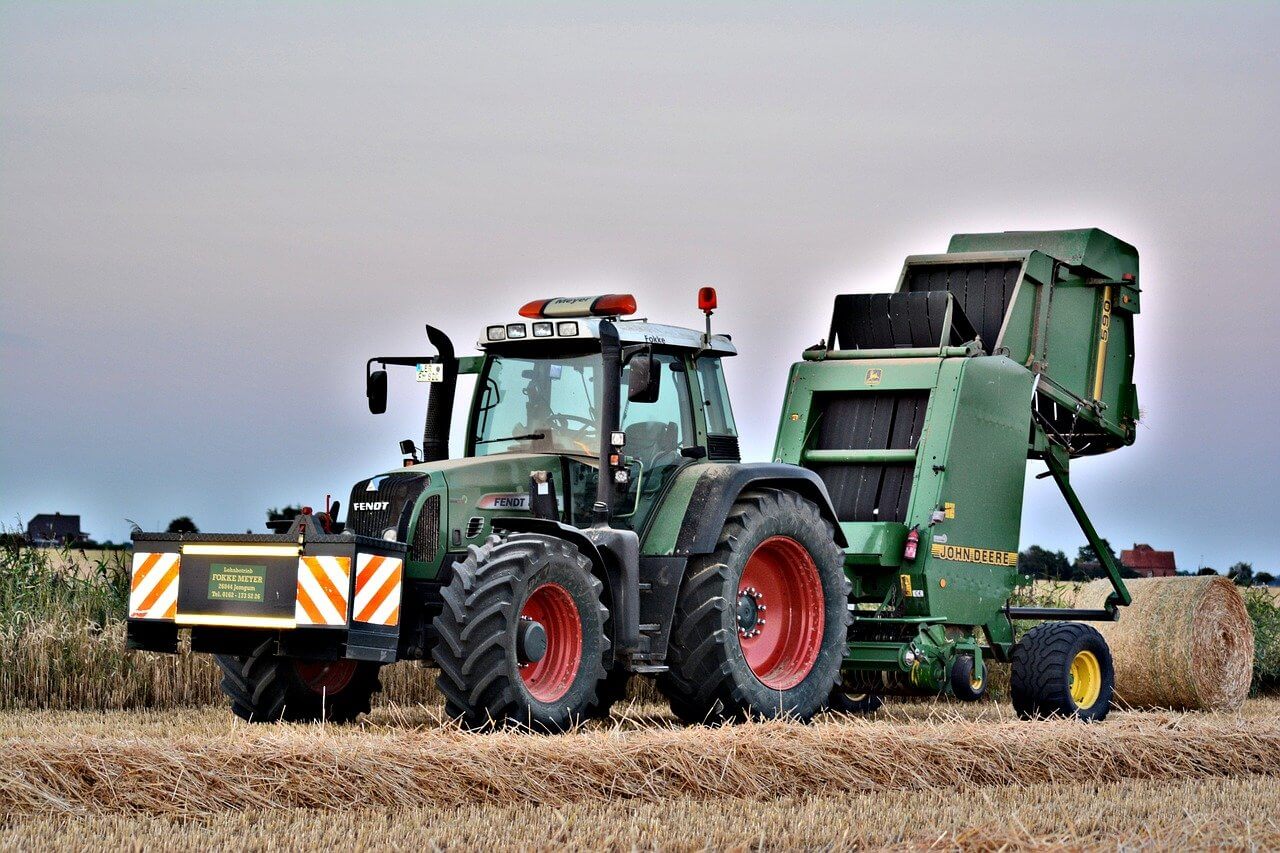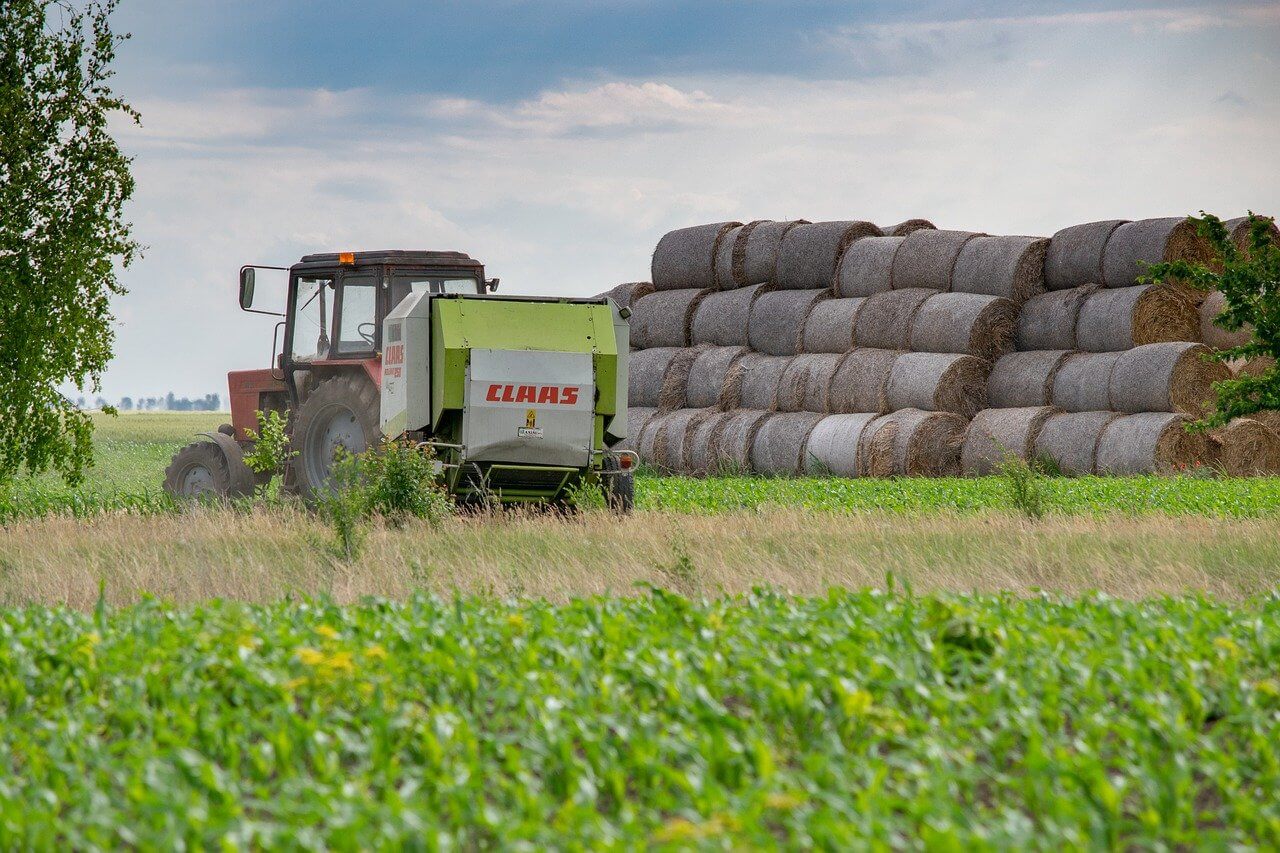Cutting and raking a crop is only half of the battle. A baler is necessary to take those harvested crops and make them more convenient to transport, store, and/or sell. Without a baler, farming could be a lot more labor-intensive, to say the least. But, knowing whether or not your farm or homestead is ready for the investment of a baler can be a bit tricky. Let’s take a look at what a baler does on the farm, the best uses for a baler, and purchasing options for this heavy-duty machinery.
What You'll Learn Today
What Is A Baler?

A baler is a piece of farm equipment that is used to take cut and raked crops, like hay, cotton, silage, etc, into compressed bales.
These compressed bails of plant material make them easier and more efficient to transport and handle throughout the consumer cycle. A properly baled bale of crops will retain more nutrients for later use, whether it be for livestock or something else entirely.
The history of balers is quite interesting. Before commercial balers were invented, this job was done by hand. Pitchforks and other hand tools were used to create haystacks that took up much more space and required much more physical labor.
In the late 1800s, the first mechanical balers were invented and commercialized. In the early 1900s, they were adopted and the use of balers is almost universal on medium-scale and large-scale farms.
What Does A Baler Do?
When a crop is cut and raked into a windrow, it needs to be collected to be able to be stored and/or sold. A baler compresses this cut and raked plant material and binds it with some form of binding, like twine, wire, or netting.
This keeps the compressed plant material in place for long periods of time before eventually being removed by the end consumer.
The use of a mechanical baler is more efficient than doing this laborious work by hand. It allows the machine operator to harvest large plots of land in a short amount of time.
The binding process also allows the harvested crop to be transported over long distances, which was simply impossible with old-age haystacks.
How Does A Baler Work?
The intricacies of how a baler works are dependent on the type of baler, but the overall process is much the same:
- Collect the cut and raked crop.
- Feed the crop into the baler chamber.
- Once the desired compression is reached, the baled material is bound/wrapped.
- The bale is then expelled through a chute.
Cutting and raking are done by a different piece of farm equipment. A baler comes in when crops are raked into rows that are cured and ready to be picked up and baled.
The baler typically has a raking device that allows for the crop to be picked up without collecting a lot of rocks, sticks, and other debris that can be present on the ground.
While the baling chamber is being filled, the operator continues driving along the row until the right amount of plant material enters the chamber.
Round balers will tell the operator when enough of the crop has been collected to bind and wrap the bale, which means the tractor will stop moving and the bale will be expelled behind the tractor.
Square/rectangle balers collect the plant material and cut it to the right dimensions before expelling it through the bale chute. Some of them are equipped with kickers, which are ejectors that project the finished bales onto hay racks pulled behind the baler.
Both Round Balers and Square Balers are pulled behind tractors typically. Each has pros and cons over the other, so which you choose comes down to what you need from your machinery and harvested crops.
Here is a more detailed guide on operating a baler.
What Is A Baler Used For?
While most people will think of bales of hay when thinking of balers, they are used for more than just hay crops. The compression and binding of plant materials make them great for cleaning up crop residue from fields as well that can be used for straw or bedding for livestock.
Hay crops, cotton, flax, and silage are the typical crops that utilize balers regularly, but they can be used for a variety of others as well.
The use of a baler can clear out a plot of land to prepare for the next growing cycle faster than the natural process of letting crop residues die back and compost in place. Farmers use them to bale corn stalks, rice straw, and much more.
Hay crops, like alfalfa and various grass species, are baled to preserve nutritional value present at the time of cutting. Properly cured and baled hay can retain most of this nutrition and provide the ability of transportation over long distances instead of only being able to be fed to livestock in the field.
This increases the viability of profiting from a crop by expanding the marketing area of the farm. Without a baler and other farm equipment, hay crops simply wouldn’t be as profitable!
Types Of Balers

Balers for farm usage are segregated by the dimensions of the bale produced and what scale of farm they should be used on.
Round Balers
Round Balers are the most common with large-scale farms that have tons of crops to harvest and bale. They produce round bales that can weigh between 1,100-2,200 lbs.
They are typically wrapped in mesh or plastic and the bales of hay can be fed as is in the field. The hay can also be rolled out behind a feeding barrier or in a straight line for bedding or general feeding.
Rectangle Balers
Rectangle Balers produce larger bales than Round Balers and offer more versatility for stacking and storage. However, these bales are so large that they require forklifts for transporting. Feedlots are a typical place to see these large rectangular bales.
Square Balers
Square Balers typically produce rectangular bales that weigh between 50-100 lbs each. They are used on small-scale farms and homesteads and are falling out of favor due to the efficiency of the other types of balers.
If you are baling hay or crops on a small farm or homestead, they are still quite useful and may be easier to finance as well.
Specialty Balers
There are special types of balers to be used when baling specific crops. For example, there are Silage Special Balers that are made to pick up both wet and dry crops whereas regular balers are made to pick up dry crops only.
There are also Pine Straw Balers, created to bale pine straw specifically. If a crop has unique needs when harvesting then there is probably a specialty baler on the market for it.
When Is The Best Time To Use A Baler?
Using a baler at optimal times is dependant on the stem moisture and the relative humidity of your area. For example, when baling alfalfa, you want it moist enough to ensure you don’t lose the majority of your leaves and only end up baling stems and sticks. Too moist and you will have problems as well.
Some farmers swear by baling only in the evenings or at night, but this recommendation isn’t universal. Optimal baling time is dependant on your climate and moisture levels in the cut and raked crop.
Measuring your windrow moisture levels and monitoring your weather conditions will tell you what you need to know about when to bale. If in doubt, ask other farmers in your area for advice!
Where To Buy/Rent A Baler
Tractor suppliers and commercial agriculture companies are the best places to shop for commercial balers. You can also find used balers for sale near you from other farmers who have upgraded. This is typically how people get started with Square Balers.
Heavy equipment rental companies may carry rental balers as well. These can be more economical than purchasing one for those who already have access to a tractor but won’t be using a baler multiple times each season.
If purchasing a baler isn’t in your budget and you can’t find rental balers available near you, there is almost always a willing farm for hire with a baler that will come to your land and bale your crop for you for a fee.
How Much Does A Baler Cost?

Round Balers can cost around $35,000. Square balers are typically more affordable. Rectangle Balers are usually reserved for extra-large farming operations and will cost the most. Keep in mind that you’ll also need a mower/conditioner, rake, and tractor to make the hay operation viable.
Of course, you can purchase secondhand equipment more affordably. The high costs associated with baling crops is why so many small and medium-scale farmers pay a professional to come out and do the baling for them each growing season.
What Are The Best Brands Of Balers?
There are quite a few reputable brands that produce high-quality balers for your farm. John Deere, Krone, Hesston, McHale, and New Holland are favorites by those in the hay production industry.
What matters more than the brand is the price fitting in your budget with the ability to get the job done the way you need it! Don’t simply rely on a brand name when purchasing expensive farm equipment like balers!
Final Words On Balers
Most homesteaders won’t be using large-scale balers. Small-scale farmers and homesteaders producing a few acres of crops can get by with the smaller and more affordable Square Balers (or they can even build their own mini balers).
Round Balers and Rectangle Balers are best suited for large-scale farmers that harvest tens of thousands of lbs of crops.
Hopefully, this guide has taught you something you didn’t know about this piece of farm equipment that has been imperative to farming for decades! If you are looking for more guidance, here is our guide to cleaning a baler, including hornet’s nests, and here is our guide to sharpening baler knives.